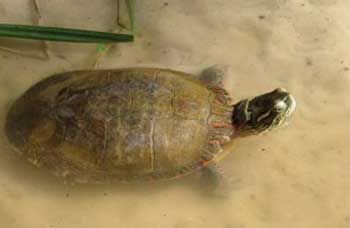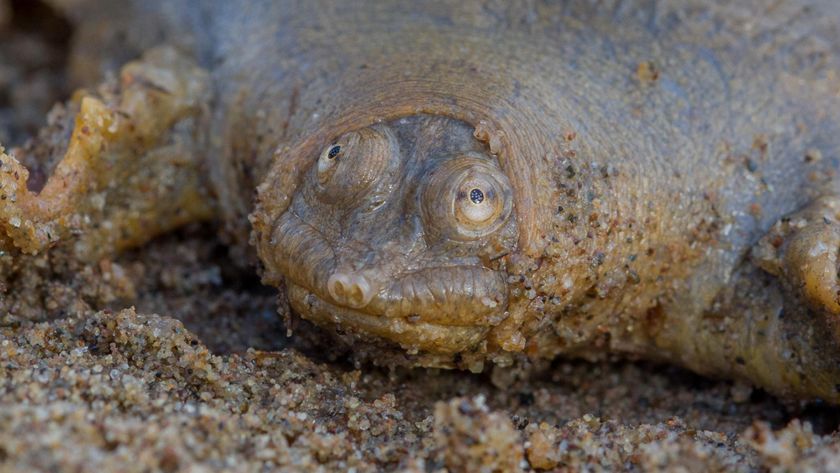Turtles Act Like Chameleons

Freshwater turtles’ skin and shells often match the color of their habitat’s substrate, which may help them deceive predators and prey alike. But what happens if turtles change abodes, from a black swamp, say, to a sandy-bottomed pond?
John W. Rowe, of Alma College in Michigan, and three colleagues collected gravid female midland painted turtles and red-eared sliders from the wild, brought them to the lab, and injected them with oxytocin, a hormone that induces egg laying.
They assigned the hatchlings to two control groups, which they kept for 160 days on either a white or a black substrate, and to two “reversal” groups, which they kept for 80 days on white or black and then switched to a substrate of the opposite color for another 80 days. The researchers periodically used a spectrometer to measure the color intensity of spots on each turtle’s carapace and head.
By day 80, all the turtles had lightened or darkened, approaching the color of the substrates they were living on. By day 160, the controls were staying the course, but both reversal groups had switched and were now well on their way to the color intensity of their new substrate, confirming that turtles can completely reverse melanization.
That puts freshwater turtles in the same league as chameleons and squid—even if their melanization process is, true to form, much slower.
The research was published in the Journal of Herpetology.
This article was provided to LiveScience by Natural History Magazine.
Sign up for the Live Science daily newsletter now
Get the world’s most fascinating discoveries delivered straight to your inbox.












